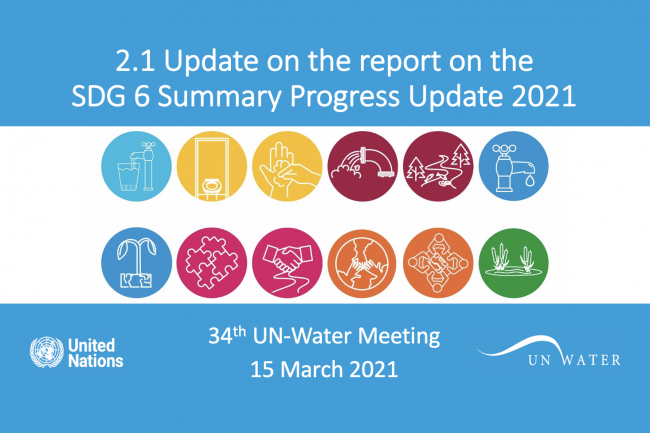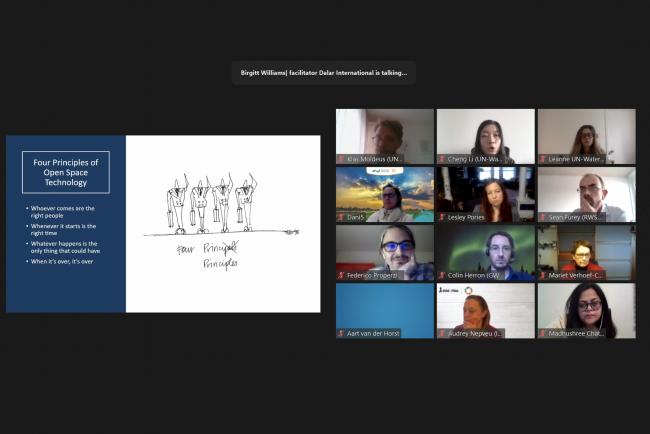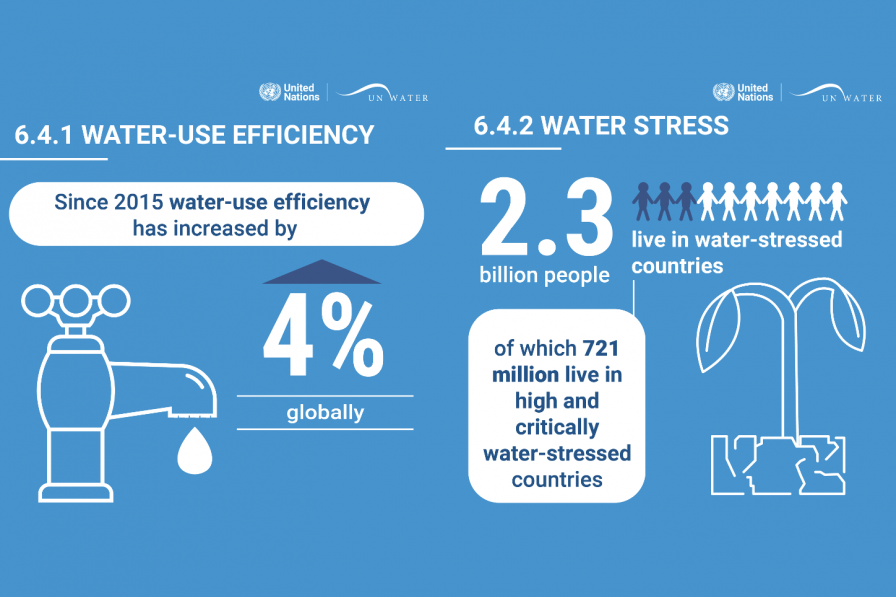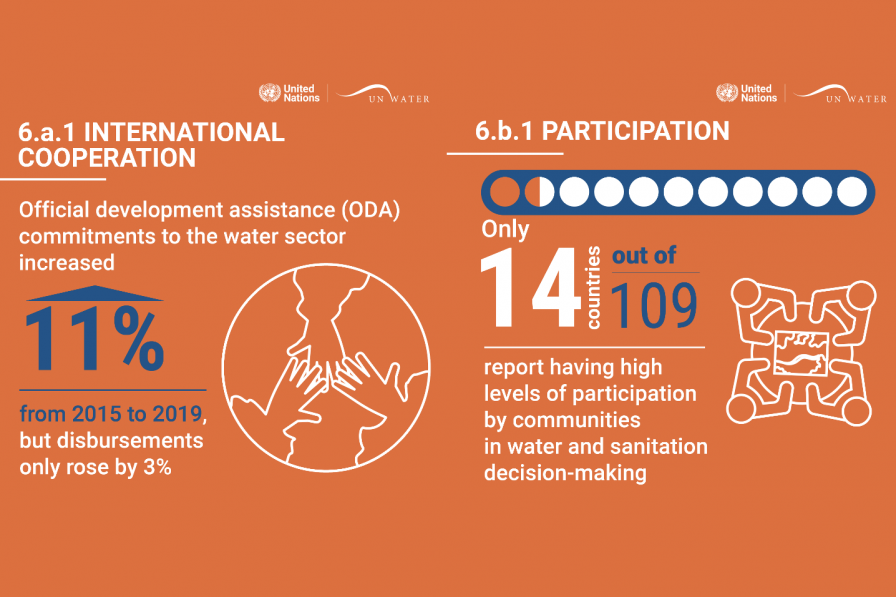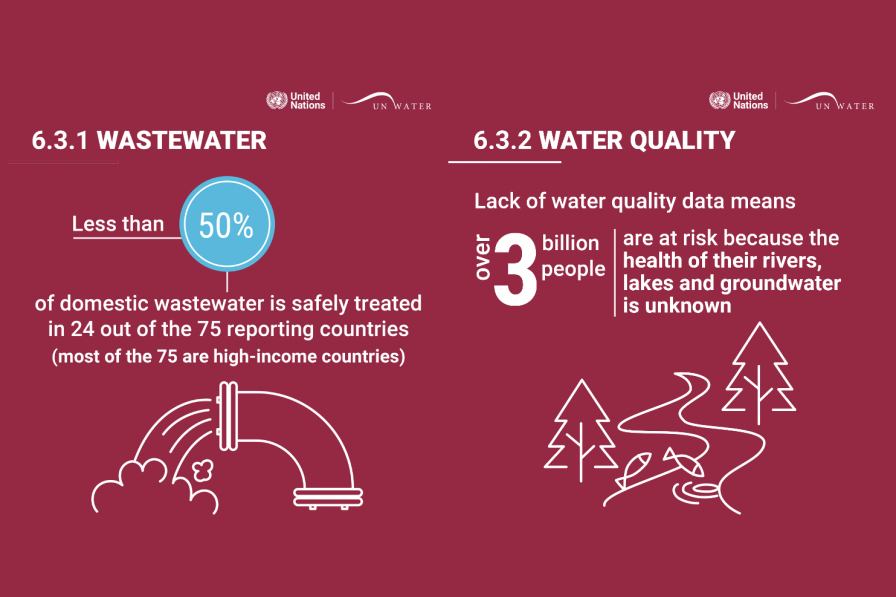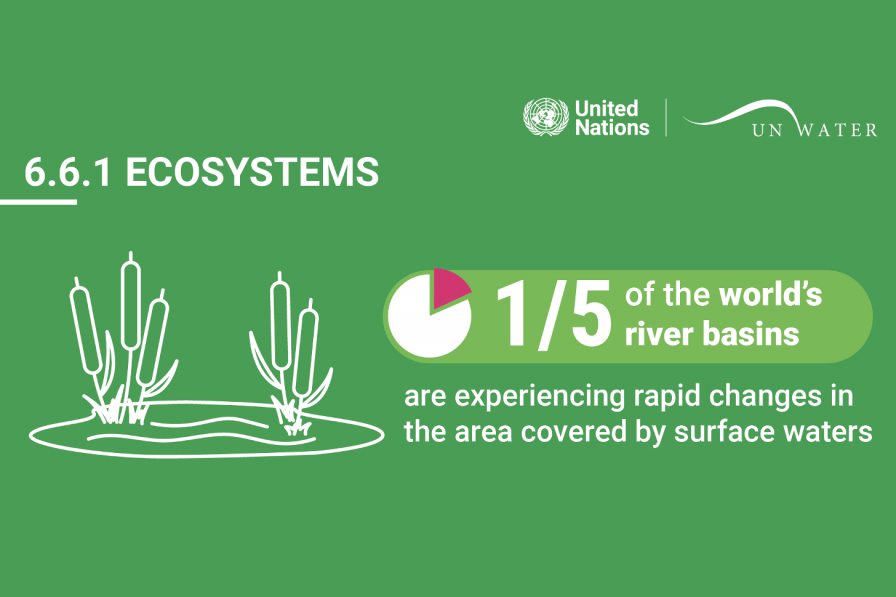UN-Water Members, Partners, and observers considered how to accelerate progress towards water and sanitation for all by 2030, especially in light of a just-released report that indicates ambitions for 2030 remain off-track.
The 34th meeting of this UN interagency coordination mechanism brought together over 120 representatives from global organizations on 15-17 March for a virtual discussion about how to jointly accelerate the implementation of global objectives related to clean water and sanitation. Discussions focused in particular on the SDG 6 Global Acceleration Framework and upcoming high-level meetings focused on international water-related goals. The Sustainable Development Goal (SDG) 6 Global Acceleration Framework was launched in July 2020 by UN-Water and provides a platform for implementation of SDG 6 on clean water and sanitation, including through the country-level engagement pilot activities in eight countries.
Participants were briefed on plans for a high-level event on water-related goals and targets of the 2030 Agenda, which was organized by the President of the UN General Assembly and took place on 18 March 2021, the day after the 34th UN-Water Meeting concluded. They also discussed the series of meetings the 18 March event would kick off in the lead up to a March 2023 high-level conference for the midterm review of the Water Action Decade.
To inform these discussions, a “Summary Progress Update 2021 on SDG 6” was produced by the Integrating Monitoring Initiative on SDG 6, using the latest data on the indicators for each SDG 6 target. Participants at the March 2021 UN-Water meeting noted that, while the report reveals that much work remains to be done to achieve SDG 6 by 2030, it also finds that billions of people have received access to safe drinking water and sanitation over the last 20 years. The report also revealed that, due to the lack of data from many countries, it is not possible to produce a global estimation of water quality. The report indicates that water use efficiency is increasing, but some regions are using all of their water or using non-renewable water sources that will eventually run dry. On water cooperation, only 22 countries report operational arrangements for transboundary cooperation while, at the same time, one-fifth of the world’s river basins are experiencing rapid changes in the area covered by surface water. More detailed reports will be published for almost every SDG 6 indicator in mid-2021.
On the second day of the meeting, a series of small group discussions considered challenges and opportunities in building momentum for implementation on clean water and sanitation. Participants shared communication and capacity-building needs and strategies, and proposed further work on linkages between freshwater and biodiversity and on transboundary water cooperation.
The meeting continued with a closed session on the third day, 17 March, during which UN-Water Members considered operational issues.
